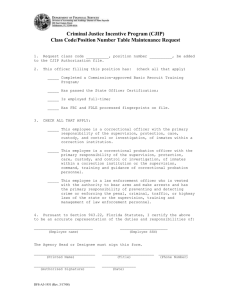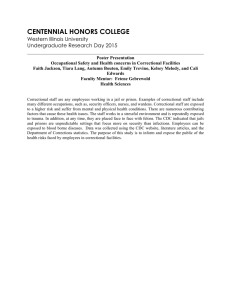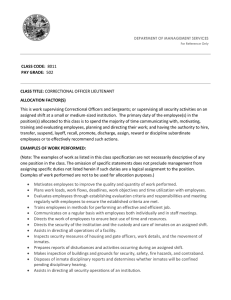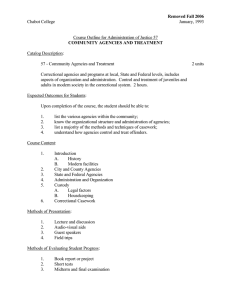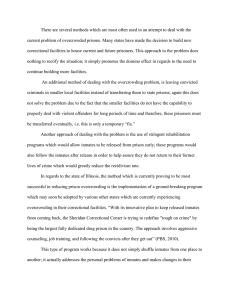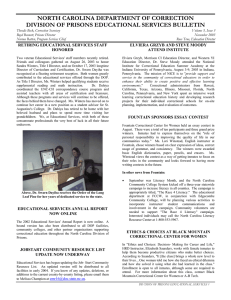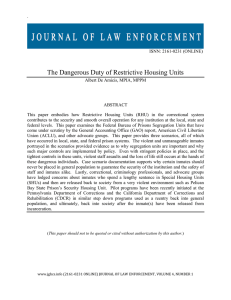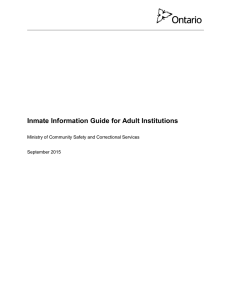Document 18012352
advertisement
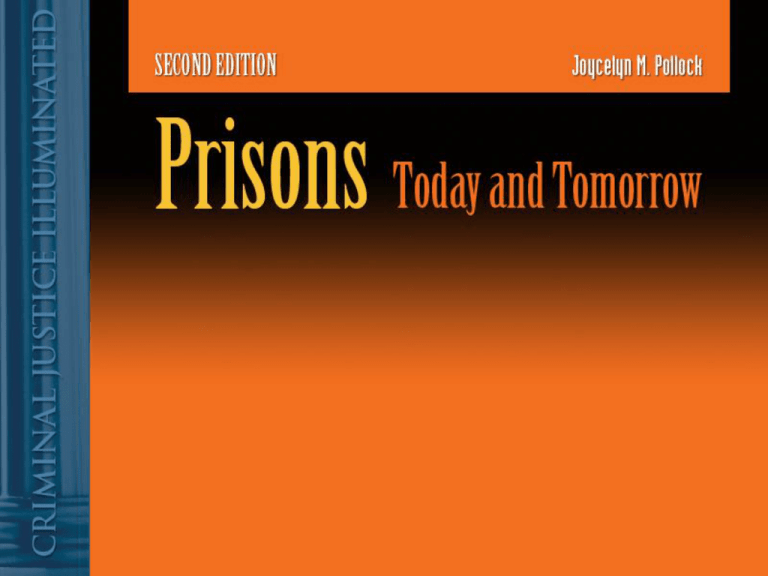
Chapter 7 Correctional Staff and Management The Correctional Officer Training: The Transformation From Citizen to C.O. Constantly increasing in hours and sophistication Includes physical training, “how to” training, as well as academic Trainees: “end of the liners”, “in the blood”, “former law enforcement” On the job training (testing of the rookie) The Base of Correction Officer Power Concept of “defect of total power” Hepburn: legitimate, coercive, reward, expert, referent “The Job:” Correction Officer Duty Positions Duty posts Cell block, work detail, industrial shop, yard, admin building, perimeter, relief Bid system Shift lag: impaired performance, irritability, etc. The Correctional Officer Subculture Kauffman’s elements of subculture Subculture influences how to Perceive inmates Anticipate trouble Manage inmates Subculture has changed as workforce has become diversified Minority and Female Officers Women – 32% of staff and administrative White – 68% of staff and administrative Female officers in prisons for men Have a “calming” effect Do their job as well as men Zimmer’s research: majority of male inmates did not see invasion of privacy Training is important Sexual relationships with inmates can be a problem Cross-sex supervision (advantages and disadvantages) Stress and the Correctional Officer Role conflict Dangerousness Low Pay (median salary $32,000 – 2002) Administrative Support Peer Support (negative impact on job satisfaction?) Family and Community Support Educational Level Correctional Experience Administrators and Managers Management Functions Planning (avoid crisis centered management) Organizing Staffing Leading (concept of transformational leaders) Controlling Management Styles Autocratic/Authoritarian Management Participatory Management Shared Powers Management Inmate Control Management
